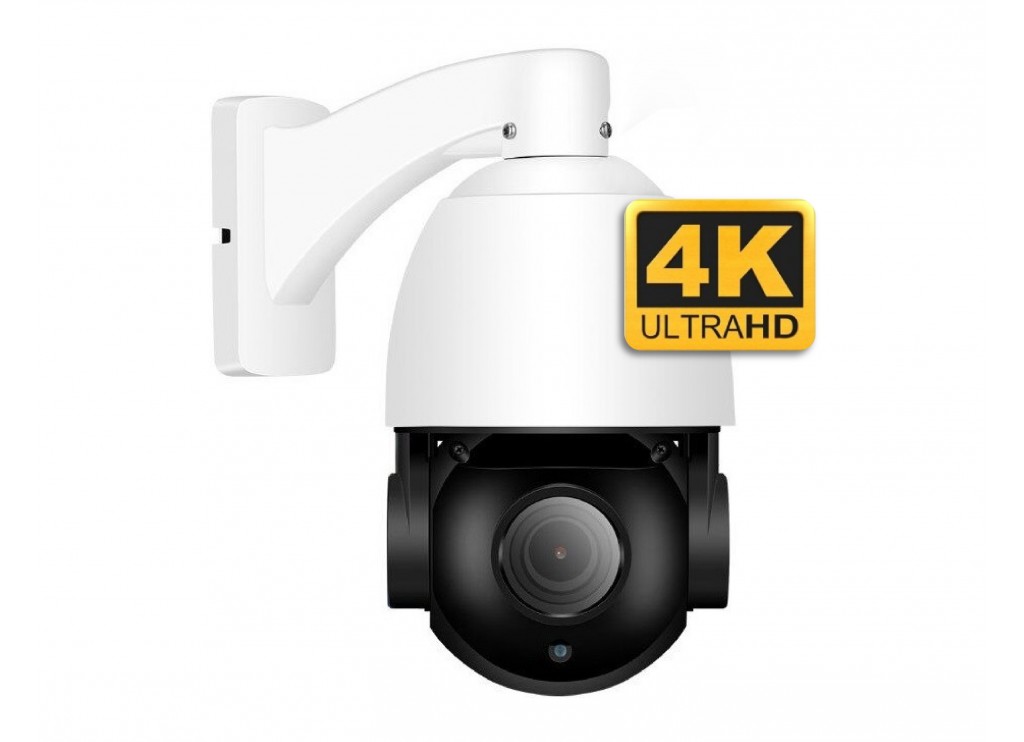
PTZ stands for Pan, tilt, zoom. PTZ cameras are powerful surveillance tools for long range and wide area surveillance. But there are some things you should consider before deciding on a PTZ camera.
When to use Pan-Tilt-Zoom Cameras
PTZ cameras are more expensive than most other types of cameras. They have three motors: one to pan, one to tilt and one for the zoom lens. They have cooling and heating systems to maintain top operational performance in extreme weather conditions. It takes a lot of electronics to achieve this level of performance. In addition, they are a mechanical device which is expected to work flawlessly for years, so the quality of the components must be of the highest caliber. With all of this considered, you can see why this is a more expensive camera.

PTZ cameras allow you to control their viewing location with software built into the NVR (Network Video Recorder), using a smartphone app or Joystick.
They are most effectively used to monitor parking lots, gates, schools, office buildings, storage facilities, warehouses, docks, large open areas and target areas that are considerable distances from the camera.
Due to their cost and larger size, they are seldom used for home or residential applications. As powerful as they are, they still can only view one location at a time - so, for the cost of one PTZ camera, you can often install 3 or 4 standard cameras and have much better coverage. With that said, there are applications where a high performance PTZ camera is the right choice. Often, a system will consist of many standard security cameras and one or two PTZ cameras to enhance the effectiveness of the entire system.
PTZ cameras are the top performers when it comes to outdoor surveillance. They offer the most powerful zoom lens, the most powerful night vision systems and now, several models have software that automatically follows motion. This feature is called "Auto Tracking". The camera is positioned in a parked location, with a wide angle view of the area for the camera to cover. When motion is detected (such as a car or person) the camera will automatically pan, tilt and zoom, following the source of the motion. When the person or vehicle moves out of the camera's viewing capability, the camera automatically goes back to its "parked position" and waits for the next movement.
PTZ cameras send their video to the video recorder and the video recorder sends pan, tilt, zoom commands to the camera, all on the same network cable or coax cable (CVI). Because of their power consumption, they do require their own power supply located near the camera location. Each PTZ camera is shipped with its own power supply (included).
PTZ cameras can be wall mounted, corner mounted or pole mounted. They should be located high so that they can cover as much ground as possible. There is very little maintenance. Periodically, the cameras lens and night vision system should be cleaned with some form of glass cleaner. Other than that, they are designed to work with low management, at your command, flawlessly, for years.
NEW - PoE powered PTZ Cameras!
Our new ProPTZ-4K solves all the problems associated with powering PTZ cameras. Most PTZ cameras require a separate wire run for the power supply (in addition to the Cat6 communication). Our new cameras power the cameras using PoE technology. Only one Cat6 cable from the NVR or PoE unit is needed. The single cable powers the camera and transmits the video and data control.
Related Links:
4 Port PoE UnitPoE Extender
Video Sample
Software Controlled
All the DVRs & NVRs we offer have PTZ control built into the software, allowing you to setup and control each camera individually.
Remote Controlled
PTZ cameras can be remotely controlled through the internet or a smart phone using the remote access feature of the video recorder.
Automatic Tours
The cameras can be set to run automatic tours, panning, tilting and zooming to preset viewing locations for a preset duration, then moving to the next preset view.
Preset Alarm Positions
The cameras have the ability to pan, tilt, and zoom to a preset location if a specific alarm is received, such as a motion detector, door alarm or other sensor conditions. This is accomplished by connecting the sensors to the alarm inputs on the video recorder and programming the cameras response to an alarm condition.
Low Light & Night Vision
Low light cameras can provide extremely clear pictures in almost no light. The light level can be as low as .002 LUX. If there will be periods of zero light, a long range night vision PTZ camera may be the right choice. Night vision cameras cast out infrared light which allows them to generate clear black and white video in complete darkness.
Additional Support
For further information about PTZ system design, please feel free to contact one of our support representatives. We’ll be glad to help. Toll Free 1-800-431-3056
Thank you for contributing!
We would love to hear your point of view, thoughts or comments. Post a reply below or share this post on social media, then send us a link to the post - sales@backstreetsurveillance.com. We'll send you a special discount code giving you maximum savings at checkout. As always, your email is protected and only used to send the discount code.



